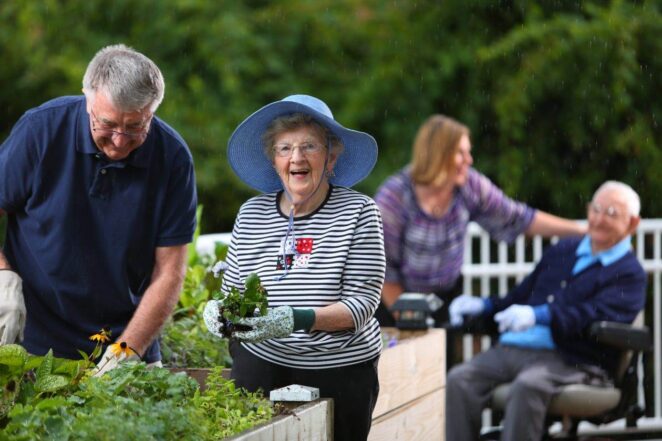Retirement marks a pivotal chapter in life, one that many of us anticipate with a mix of excitement and uncertainty. It’s the time when the hard work should ideally pay off, allowing individuals to enjoy their golden years with peace, pleasure, and a sense of accomplishment.
But what does living the good life actually look like once you’ve punched the clock for the last time? Here are some key components that shape an enriching retirement.
Embracing New Passions and Interests
The first aspect of a joyful retirement is the freedom to explore new hobbies or reignite old passions that you might not have had time for during your working years. Whether it’s painting, gardening, photography, or learning to play a musical instrument, retirement offers the luxury of time.
Engaging in these activities isn’t just about filling hours; it’s about enriching your life and expressing yourself in new ways. Many find that this creative exploration contributes significantly to their sense of satisfaction and well-being in retirement.
Pursuing these interests can lead to new friendships. Joining clubs or interesting groups that focus on specific hobbies can help retirees meet like-minded individuals who share similar interests. This can be incredibly fulfilling, especially in combating the loneliness that some might feel after leaving the workforce.
Achieving Financial Stability

Achieving financial goals sooner rather than later can significantly influence the quality of life in retirement. Financial stability is crucial, as it alleviates stress and offers the freedom to enjoy retirement to the fullest. It’s important for retirees to have a clear understanding of their finances, including a well-structured budget and a solid investment plan that provides for their needs and wants.
Effective financial planning should ideally begin decades before retirement, focusing on saving, investing, and paying off debts. Once retired, managing your finances often shifts towards maintaining a budget that accounts for a fixed income, which might include pensions, savings, and any passive income streams.
Ensuring financial stability means retirees can afford healthcare, leisure activities, and unexpected expenses, providing peace of mind and the ability to enjoy the fruits of their lifelong labor.
Staying Physically and Mentally Active
Physical and emotional health are the bedrock of a fulfilling retirement. Staying active through exercise can help maintain health, mobility, and independence. Regular physical activity, whether it’s walking, yoga, swimming, or cycling, can enhance overall quality of life.
Mental activity is equally important. Retirees should strive to keep their minds sharp by doing things that challenge their cognitive functions. This could be through puzzles, reading, learning new skills or even part-time work or volunteering. Keeping the mind active not only enhances knowledge and skills but also helps in maintaining a healthy emotional state.
By addressing these areas, retirees can look forward to enjoying their golden years with vigor and zest, making the most of every opportunity to grow and enjoy life’s pleasures.
Discovering the Right Retirement Community

A significant chapter in the narrative of a good retirement life is choosing the right place to live. Retirement communities offer a blend of independence and community that many find appealing.
These communities are designed with the needs of retirees in mind, providing amenities such as fitness centers, group activities, and social clubs that cater to a variety of interests. Living among peers can greatly enhance a retiree’s social life, offering companionship and a sense of belonging that can be crucial during this phase of life.
One interesting trend is the increasing popularity of retirement communities in Florida. These communities not only offer year-round sunny weather and beautiful beaches but also boast a wide range of lifestyle choices from luxury living to more modest, budget-friendly choices.
Each community has its unique charm and set of amenities, allowing retirees to find one that best fits their lifestyle and interests. The allure of Florida’s warm climate and the promise of no state income tax make it a hot spot for retirees seeking both relaxation and new adventures.
Giving Back and Volunteering
Retirement is an excellent opportunity to give back to the community. Many retirees find immense satisfaction in volunteering their time and skills. Whether it’s helping at a local library, mentoring younger generations, or working with charitable organizations, these activities provide a sense of purpose and community connection.
Volunteering not only helps others but can also help retirees feel more productive and valued. The social interactions and personal growth that come from these activities often lead to improved mental health and a more joyful outlook on life.
Planning for the Unforeseen

While it’s wonderful to focus on the positives, a truly good retirement also involves planning for potential challenges. This includes having adequate health insurance, considering long-term care options, and having a plan in place for estate management.
Being prepared for the unforeseen helps ensure that retirees and their families avoid unnecessary stress and are better equipped to handle health issues or other unexpected events. Knowledge and preparation can empower retirees to enjoy their new-found freedom with confidence and security.
Conclusion
In conclusion, living a good life in retirement is about finding a balance that brings joy, fulfillment, and peace. It involves staying active and engaged, pursuing passions, and maintaining strong social connections.
Financial security, good health, and a sense of purpose play pivotal roles in ensuring a satisfying retirement.
By planning ahead and embracing a positive mindset, retirees can make the most of their newfound freedom and enjoy a rewarding and meaningful life. Ultimately, a good life in retirement is deeply personal and can be achieved by aligning daily activities with individual values and desires.



